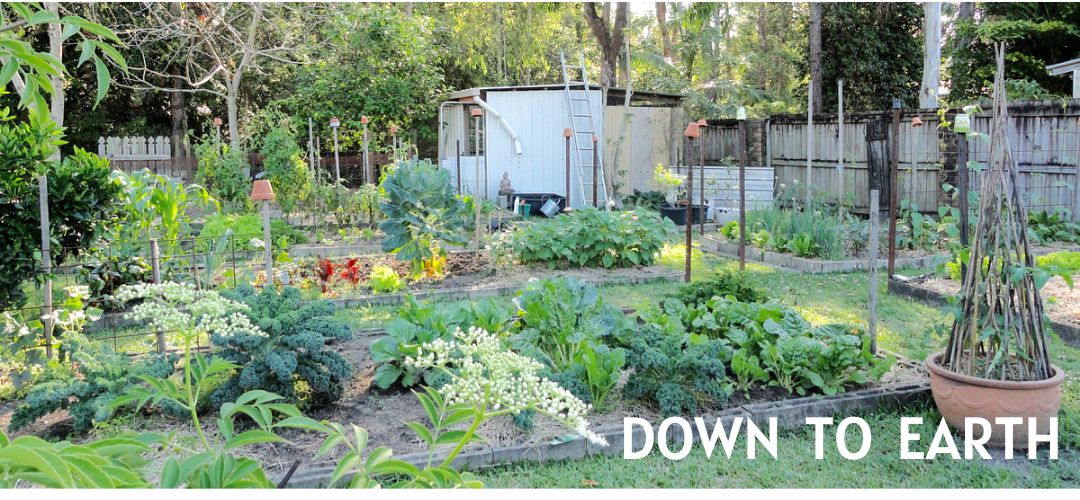Last week we started talking about food waste and how to prevent it. Of course it starts in the planning stage, before you even buy your food; if you can get that right, you'll be half way there. Once food is in the home it must be stored correctly then served when it's at its peak - both in flavour and nutrition. Storing food will be our subject tomorrow, today we're focusing on stopping the waste.
Our garden last year with compost piles in the background.
We deal with food scraps and waste according to the value it returns to us. On the top of that hierarchy are the chickens - they turn scraps into food again so they're at the top of the chain. The chooks get plate leftovers, day old bread (I bake almost every day because we like fresh bread), leftover salad, tops of tomatoes, fruit and vegetables peels. Along with the fresh greens they're fed from the garden and the grain we buy for them, they use that food to lay eggs for us and therefore we get the most value from food waste by giving it to the chickens.
We love our dog so even though there is no returned value except for the look on her face, Alice gets left over pieces of cake, soft biscuits and all the pieces of meaty fat or gristle I trim off meat before cooking.
We have our worm farm set up on an old bathtub in the bushhouse.
The worms are the next level in the hierarchy. They get whatever food no one else wants. I put it through the food processor so it's in tiny pieces. They don't need much feeding so their leftover feasts are an occasional thing, definitely not daily.
A different time in last year's garden with the compost pile and a heap of grass clipping beside it - waiting for all the additions that will make good compost.
Potato and onion peels are put in the closed compost bin to slowly decompose. If left in the open compost, they take too long. Egg shells are left to dry, then pulverised and added to the chook food as a calcium supplement. Tea leaves or tea bags go into the general compost, coffee grounds around acid loving plants, like blueberries. Pineapple tops can be planted - in a semi-tropical or tropical climate they'll fruit in their second year. Everything else goes into the general compost.
Of course all this is dependant on having those systems and animals in your backyard. I wonder how people dispose of food waste when they live in an apartment or flat. What do you do if you live in a house with no backyard, or a backyard but no chickens, dogs or worms? Of course there is the Bokashi compost system, but I'd be very interested in knowing other means of efficient and environmentally friendly food waste disposal. Please leave a comment if you're doing something clever or different.
I promised the dog food recipe today and I think it fits in nicely here because it can help you get good use from those vegetables that are going a bit soft. It also cuts down on all those tins too.
- 1 kg beef mince - if you go to a butcher you'll be able to get a lower grade and cheaper mince. Our butcher is now charging $4/kilo.
- 1½ cups raw brown or white rice
- 1 cup raw barley OR lentils
- 1 cup raw pasta
- 2 cups chopped vegetables - it can be whatever you have on hand but NOT ONIONS or LEEKS.
- 1 spoonful of Vegemite or peanut butter (optional)
- Water
When it's cold, place into portion sized plastic containers and freeze until you need them.We make this once a week. It feeds our two dogs for seven days. The dogs love it and it's got no preservatives or artifical flavourings in it. It costs around $7 a week.
They also have a scoop of Omega 3 dog biscuits in the morning. Alice weighs around 22 kgs and she gets two cups of this food per day.
- 2 cups water mixed with 2 tablespoons Vegemite OR two cups beef or chicken stock. This can be homemade or from stock powder.
- 1 cup bread or plain/all-purpose flour
- 2 cups wholemeal or rye flour
- 1 cup rolled oats or instant oats
- ½ cup powdered milk
- 1 teaspoon yeast





